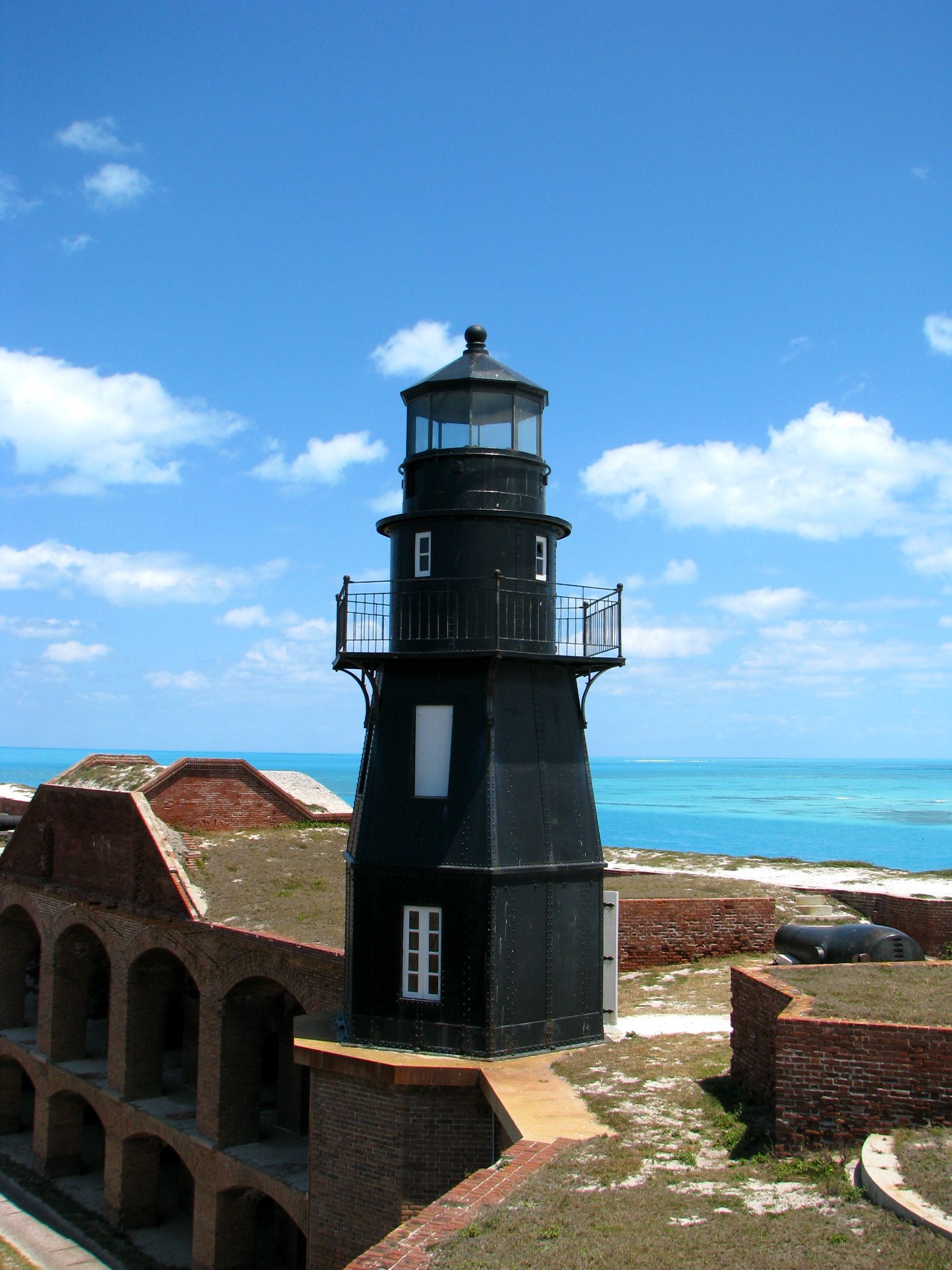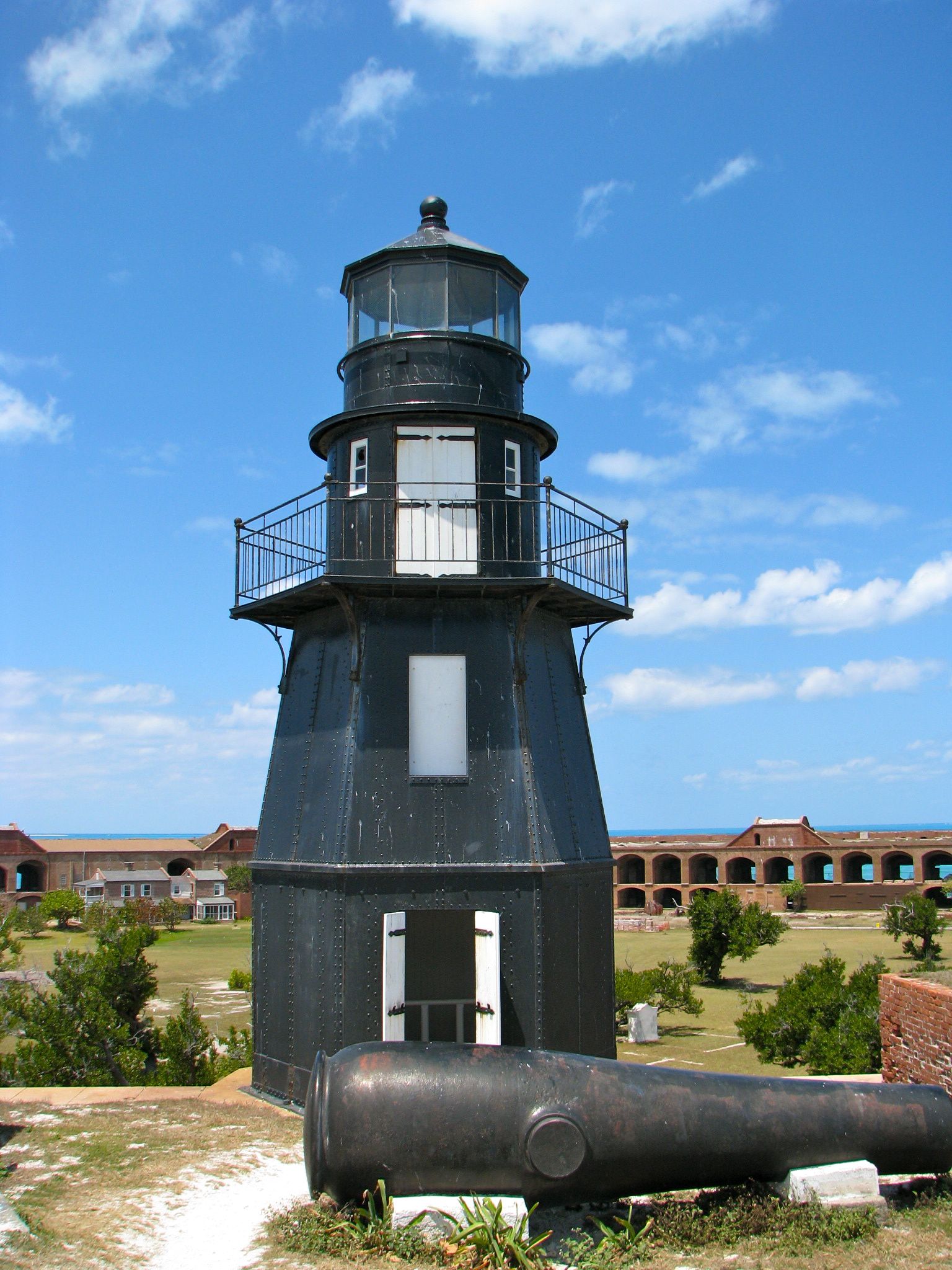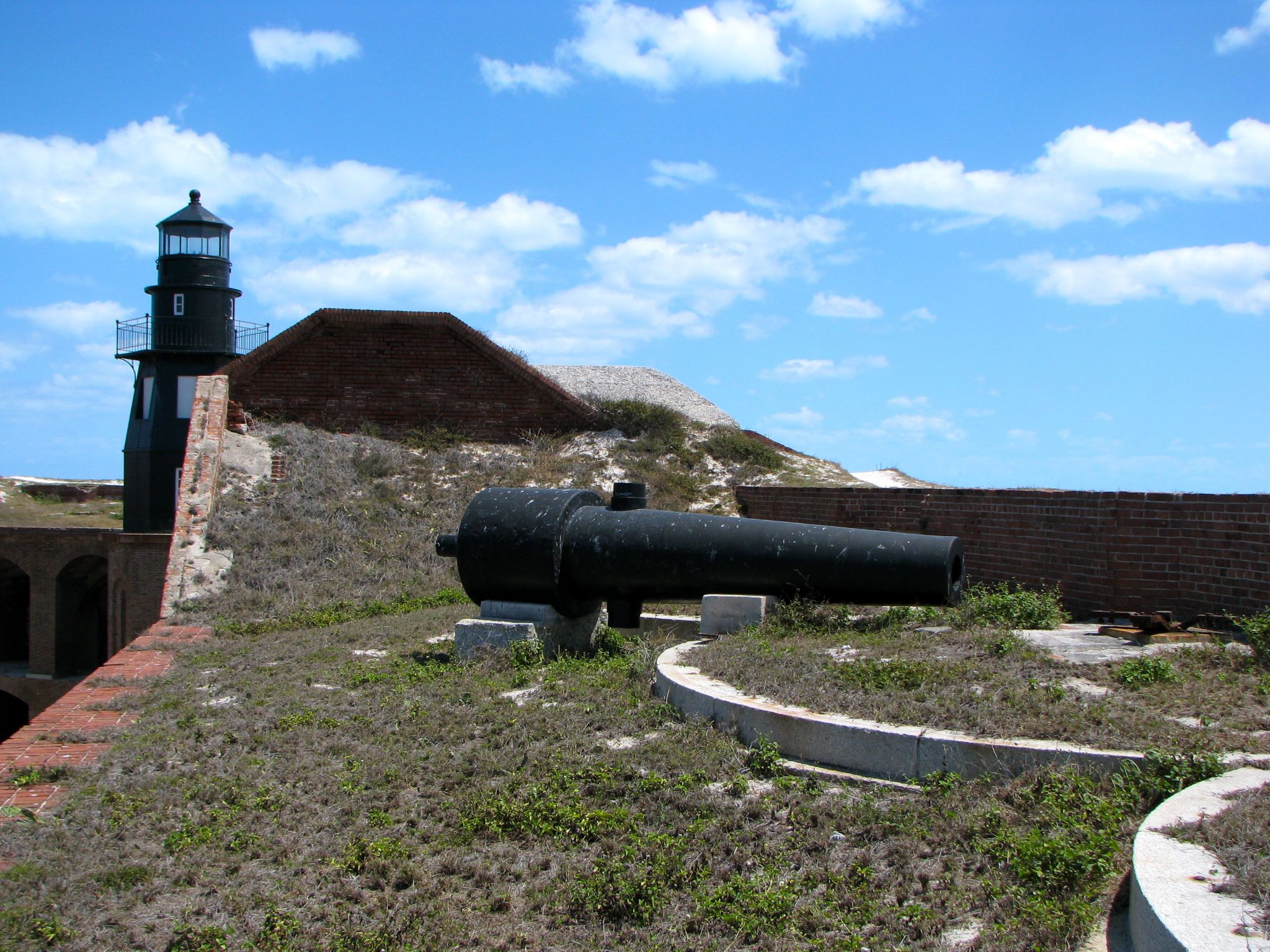Dry Tortugas National Park, Florida (April 2009)
The end of the Florida Keys is not Key West. Not hardly. Islands of coral, sand and mangrove trail out further into the Gulf of Mexico. First come the Marquesas Keys. Further out still, some 70 miles from the civilized shores of Key West come the Dry Tortugas.
A Strategic Position

This small cluster of keys anchor the far western terminus. They provide less than 150 acres of land struggling to push above the waves. Nonetheless they sit at a strategic point. Shipping lanes serving ports of call all along the Gulf of Mexico and every bit of international trade serving the interior of the North American continent via the Mississippi River watershed run past here. It didn’t take long to realize that the shoals and reefs of the Dry Tortugas were a huge navigational hazard. They racking up numerous shipwrecks along its shores. Mariners needed a lighthouse.
Lighthouses on Garden Key

Florida became part of the United States in 1819. A lighthouse arose on Garden Keys only seven years later in 1826 (map). The first structure was made of brick and raised a light over the Dry Tortugas for two decades before construction began on Fort Jefferson (see my Fort Jefferson page). Mariners complained that it still wasn’t sufficient. The government responded by constructed a much taller lighthouse on nearby Loggerhead Key. They also moved the Garden Key Lighthouse’s first order Fresnel lens to Loggerhead. Garden Key was then downgraded to a fourth order lens. From then on it marked the harbor rather than warning ships away from the dangerous Dry Tortugas shoals.
Hurricane

A fierce hurricane pounded the islands in 1873, severely damaging the Garden Key Lighthouse. Experts soon determined that repairs would not be sufficient. It needed to be replaced. A new lighthouse, this time made of iron plate, and this time built atop Fort Jefferson (which did not exist at the construction of the original version) rose above the surf.
The designers felt that iron would withstand enemy assaults better than brick. Thus the lighthouse took its distinctive plate metal hexagonal form. The new Garden Key Lighthouse stood 70 feet above the focal plain and atop the fortress, marking the harbor entrance until its deactivation in 1924. It can still be visited today in Dry Tortugas National Park.
Loggerhead Key Lighthouse

The much taller Loggerhead Key Lighthouse sits only three miles away (map) but proved much more effective when lit in 1858, featuring its 151 foot height and a first order Fresnel lens it borrowed from Garden Key. Its conical brick outline commands the Dry Tortugas and provides the protection to mariners that the earlier attempt had only hoped to fulfill.
The view, above, was captured from the western side of Fort Jefferson. Notice the structures encircling its base. These included housing for the lighthouse keeper and his crew along with a freestanding oil house and cisterns for collecting water, for the name “Dry Tortugas” is both an accurate description and a warning to mariners. No potable water can be found here except for what can be collected from the frequent rains that scour the island. The light remains active today although automated in 1988.
Readers who have an interest in lighthouses might also want to check my Lighthouse Index page.

Leave a Reply